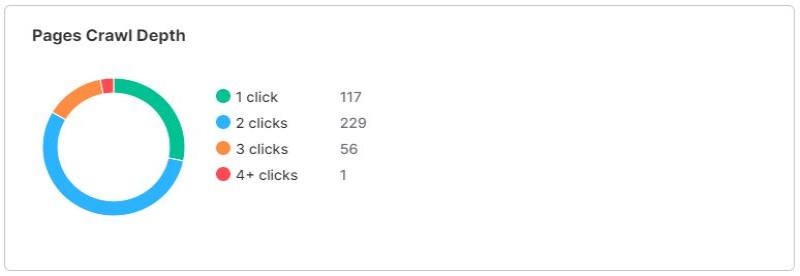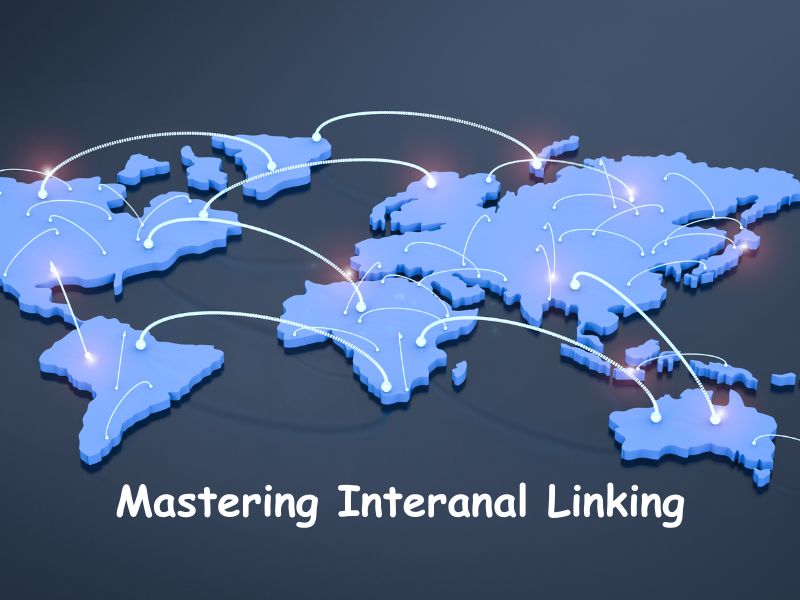Mastering Internal Linking: Building Your Link Juice
Are you ready to deep-dive into an SEO technique that’s right under your nose but often overlooked? That’s right, we’re talking about internal linking.
It’s more than just linking one page of your website to another. When done right, it can significantly boost your site’s SEO performance.
In this guide you will learn:
How important is internal linking in SEO?
As the saying goes, a chain is only as strong as its weakest link. Let’s start with why internal linking is indeed a big deal in the world of SEO.
It’s not just about interconnecting your pages; it’s about creating a robust web of content that search engines and users alike can navigate with ease.
By explaining how your linking contributes to your site structure, you’ll come to see your website as an intricate network rather than a standalone page.
User experience, or UX, is an integral aspect of your website that search engines take into account when determining rankings. Internal linking significantly enhances UX by guiding visitors through your site in a logical and user-friendly way, enabling them to find relevant content quickly and easily.
By providing practical examples and case studies, we’ll illustrate how you can improve UX and reduce bounce rates through an effective linking strategy.
Finally, what does this all mean for your page rankings? A lot, actually.
We’ll unravel the ways in which an effective internal linking strategy can boost your SEO by spreading link equity across your website, increasing page visibility, and potentially improving your position on search engine results pages (SERPs).
Understanding Internal Linking
Internal linking refers to the process of linking one page of a website to another page on the same website. In other words, if you’re clicking on a link on a webpage and it takes you to a different page within the same domain, that’s an internal link.
These links are vital in defining the architecture and hierarchy of your website and guide the distribution of web page authority and ranking power throughout the site.
The Role of Internal Linking in SEO and Website Navigation
Internal linking plays a crucial role in SEO and website navigation in several ways:
Site Navigation – links guide visitors through your website in a structured and intuitive manner, allowing them to easily discover relevant and in-depth content. This not only keeps visitors engaged but also potentially increases the time they spend on your site.
Information Hierarchy – By properly structuring your links, you can establish a hierarchy of information on your website, making it easier for search engines to understand the context and relationship between different pages.
Link Equity Distribution – Internal links help distribute link equity (also known as ‘link juice‘) across your website. Pages with a lot of backlinks have higher link equity, which can be passed to other pages through internal links, boosting their search ranking potential.
The Impact of an Internal Linking on Search Engine Rankings
A well-structured internal linking system can positively impact your search engine rankings in the following ways:
- Search engines discover new content through links. By effectively using internal links, you can guide search engines to discover and index all of your site’s pages, which can improve your overall visibility on search engine results pages (SERPs).
- As mentioned earlier, internal links distribute link equity across your site. Pages that receive more link equity (from both external backlinks and internal links) tend to have higher authority and, consequently, a better chance of ranking higher in SERPs.
- By linking to relevant content within your site, you can keep visitors engaged for longer periods. This can reduce your bounce rate, a factor that search engines consider when ranking sites.
- A well-structured linking system makes it easier for users to navigate your website and find relevant information. Search engines prioritise user experience, so a site that’s user-friendly can achieve higher rankings.
The SEO Benefits of Internal Linking
Search engines use bots to discover new pages on the web, and these bots follow links to find and index content.
A study from Ahrefs shows that when a new page gets a high number of internal links, it’s crawled by Google more quickly. This is an important consideration, especially for large websites with thousands of pages.
Internal links spread link equity across your site. Pages that receive more link equity (from both external backlinks and internal links) tend to have higher authority and thus, are more likely to rank higher in search engine results pages (SERPs).
A study by Moz found a strong correlation between the total number of internal links pointing to a page and its ranking on SERPs.
Effective linking strategies can lead to longer user sessions and lower bounce rates, both of which are metrics that Google might consider when ranking pages.
On the other hand, Nielsen Norman Group found that using the same internal link on the same page is generally not a good idea as it increases redundancy and interaction cost and also it may confuse the visitors.
Effective internal linking can guide a user along a desired path, potentially leading to higher conversion rates.
For example, an e-commerce site might create links that guide a user from a blog post about a product category to a product page and then to the checkout page.
Econsultancy reported that strategic internal linking can increase conversion rates by guiding users towards high-converting pages.
Case Study: Successful Internal Linking Strategies
Amazon, one of the world’s largest online retailers, serves as a prime example of how internal linking can drive SEO success.
Analysis of Amazon’s Internal Linking Strategy and Its Impact on Their SEO
Amazon uses inside linking extensively across its platform. From the homepage, internal links lead to different categories, each of which further leads to subcategories and individual product pages.
It’s a broad-to-specific approach, starting with general categories and narrowing down to individual products.
One aspect that stands out is the ‘Customers who bought this item also bought’ section on each product page.
This is an excellent example of internal linking, as it directly connects relevant products, enhancing the user experience and keeping users engaged on the site for longer periods.
Their site-wide sidebar and footer links also contribute to their internal linking strategy. These provide easy navigation to important pages such as ‘Today’s Deals’, ‘New Releases’, ‘Customer Service’, and more.
The impact on Amazon’s SEO has been substantial. The intuitive navigation and relevance of links enhance the user experience, reflected in metrics like time on site and bounce rate.
Furthermore, their extensive linking structure has allowed Google’s crawlers to efficiently navigate and index millions of their web pages, increasing their visibility on SERPs.
Wikipedia – Example of a Well-Structured Internal Linking Strategy
Wikipedia is an excellent example of a well-structured internal linking strategy. Each article links to related articles, providing users with easy access to more in-depth or related information.
The linked pages are always relevant, the anchor text is descriptive, and the number of links strikes a good balance between SEO needs and user experience.
This internal linking strategy helps Wikipedia keep users engaged, improve its SEO, and maintain a site structure that’s easy for users and search engines to navigate.
Lessons to Learn from These Case Studies
The above internal linking strategy teaches us several valuable lessons:
- User-centric Internal Linking – Internal links should serve users first, guiding them intuitively through the website and enhancing their browsing experience. In turn, this also benefits SEO.
- Relevance is Key – Internal links should connect relevant pages. Amazon’s ‘Customers who bought this item also bought’ section exemplifies this, providing value to the user and boosting SEO.
- Effective Site Structure – A broad-to-specific site structure, as Amazon uses, helps both users and search engines navigate your site more efficiently.
- Use of Site-Wide Links – Incorporating site-wide sidebar and footer links to essential pages can further enhance your site’s navigability.
Crafting an Effective Internal Linking Strategy
When building your internal linking strategy, there are several key considerations to keep in mind:
Site Structure – Your site should have a clear and logical structure, typically in the form of a hierarchy. This structure can be the backbone of your linking strategy, guiding users and search engine bots from general to specific content.
Site Crawlability – it refers to how many clicks users have to do to get to your content. In general, it should be no more than 3 clicks.

Relevance – Internal links should connect relevant pages. The more related the content between linking pages, the more value it provides to users and search engines.
Anchor Text – The clickable text in a link, known as anchor text, should be descriptive and give users a clear idea of the linked page’s content. This also provides context to search engines about the linked page.
Link Equity Distribution – Consider how link equity will be distributed across your site. Pages that are more important or that you want to rank higher should receive more internal links.
Tips and Actionable Strategies for Effective Internal Linking
Text links are usually better for SEO than image links, as search engines can use the anchor text for context.
While internal linking is good, excessive linking on a single page can lead to a poor user experience and may dilute link equity.
When you add new content, look for opportunities to link to it from your existing content. Likewise, consider if the new content can link to existing pages.
Challenges in Internal Linking and How to Overcome Them
On large websites, managing internal links can become challenging. Automated solutions like XML sitemaps or breadcrumb trails can help.
Over time, some internal links may become broken (e.g., if the linked page is deleted). Regular audits with a tool like Google Search Console can help identify and fix broken links.
It’s crucial to strike a balance between having enough links for SEO and not overwhelming users with too many links. Aim for natural inclusion of links where they add value.
Building Your Internal Link Juice – Final Word
Mastering internal linking is a key aspect of SEO that’s too important to overlook. We’ve explored the definition of internal linking and its significant role in website navigation and SEO.
We highlighted the impact a well-structured internal linking system can have on search engine rankings and showed the importance of this strategy through compelling data and statistics.
We’ve seen how leading businesses, like Amazon or Wikipedia, have harnessed the power of internal linking to create a more engaging user experience, improve search engine rankings, and drive business success.
Plus, we’ve shared actionable tips to help you craft an effective internal linking strategy and discussed common challenges you might face and how to overcome them.
Whether you’re just starting or looking to refine your approach, remember the key elements: maintain a clear site structure, link relevant content, use descriptive anchor text, and consider link equity distribution.
We’d love to hear how you’ve used internal linking to boost your SEO. Have you faced any challenges, or do you have any success stories to share?
Please join the conversation in the comments section below or contact our office for consultation. Your experience might just be the insight someone else needs to propel their own SEO efforts forward. Happy linking!
Also Read:
– The Complete SEO Guide for Businesses
– Why is Keyword Research Important
– Decoding and Optimising LSI Keywords



